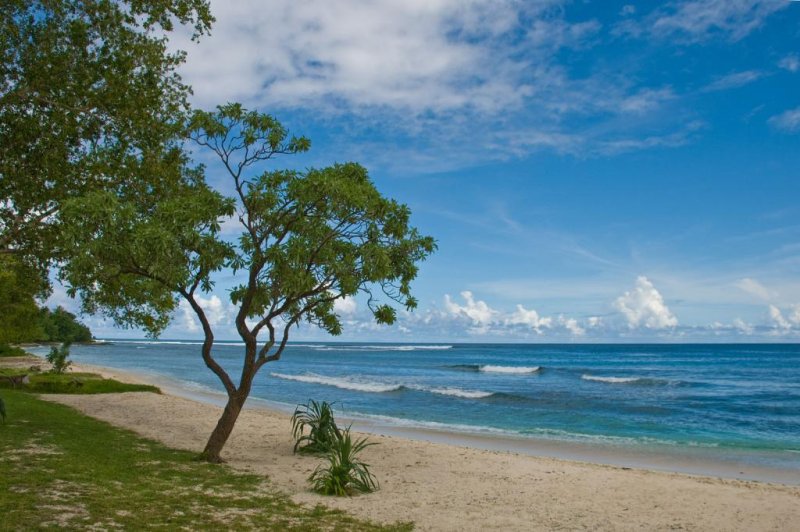The islands of Vanuatu were some of the last on Earth to be colonized. Photo by Phillip Capper/
Flickr
Jan. 23 (UPI) -- Ancient tooth plaque suggests the first settlers of Vanuatu brought bananas with them when they colonized the Pacific island some 3,000 years ago.
The tiny food particles trapped in the ancient plaque, or dental calculus, are the earliest pieces of evidence of humans transporting and cultivating banana.
Scientists described the breakthrough discovery this week in the journal Nature Human Behavior.
Roughly three millennia ago, a group of people associated with the Lapita cultural complex in Southeast Asia set out across the Pacific on canoes. They arrived at one of the last uninhabited places on Earth, Vanuatu, an archipelago in the South Pacific.
Until now, scientists weren't certain as to how these early settlers survived on the islands once they arrived. Some researchers estimated that the migrants brought domesticated plants and animals with them.
To figure out what the first settlers of Vanuatu were eating, scientists scraped plaque from teeth recovered from human remains in Teouma cemetery, the oldest archaeological cemetery in Oceania.
"One of the big advantages of studying calcified plaque or dental calculus is that you can find out a lot about otherwise invisible parts of people's lives," Monica Tromp, senior laboratory analyst at the University of Otago in New Zealand, said in a news release. "Plaque calcifies very quickly and can trap just about anything you put inside of your mouth -- much like the infamous Jurassic Park mosquito in amber -- but they are incredibly small things that you can only see with a microscope."
In addition to finding microscopic banana particles in the dental plaque, scientists found pieces of other plants that the early settlers likely ate and used to make rope. Some of the plant particles were also likely remnants of traditional medicines.
"The wide, and often unexpected range of things you can find in calcified plaque makes what I do both incredibly exciting and frustrating at the same time," Tromp said.















